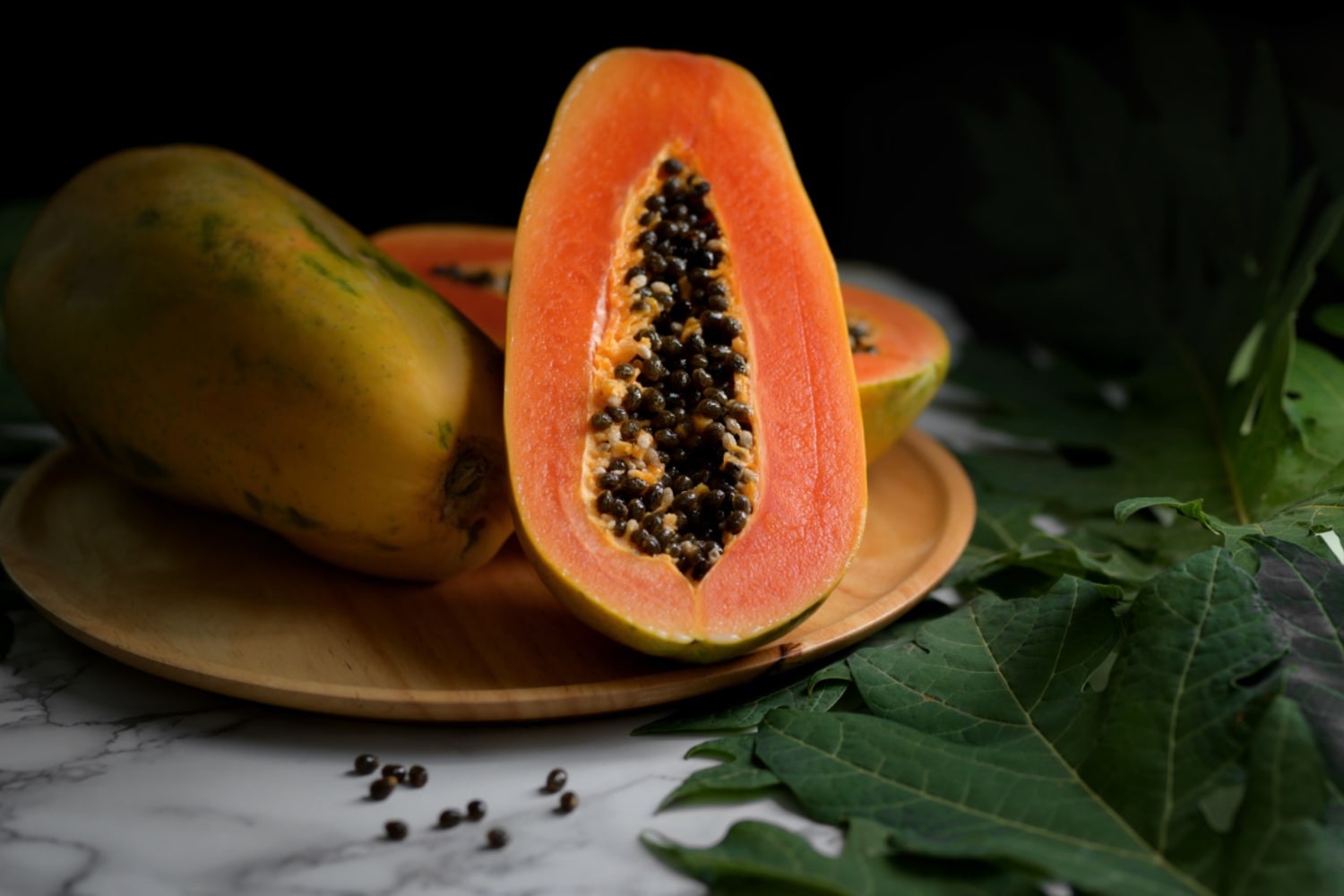Papaya is a tropical fruit with a unique taste, remarkable health benefits, and a fascinating history. Its soft and juicy flesh is rich in vitamins and enzymes, which has made it one of the most beloved fruits around the world. Papaya is used not only in cooking but also in medicine, cosmetology, and dietetics. Below are interesting and educational facts about papaya that you may not have known.
- The papaya originates from Central America, most likely from the regions of modern-day Mexico or Panama. The ancient Mayans considered it a sacred fruit and called it “the fruit of the gods.” They ate papaya for nourishment and also used its juice as a natural remedy for digestive problems.
- The first Europeans to taste papaya were Spanish sailors in the 16th century. They brought its seeds to the Philippines, India, and Africa, allowing the plant to spread throughout the tropical regions of the world. Today, papaya is cultivated in over fifty countries.
- The scientific name of papaya is Carica papaya. Although many people think it is a tree, it is actually a herbaceous plant that can grow up to ten meters tall. Its trunk is hollow, and the large leaves form a crown that resembles a palm tree.
- Papaya fruits vary in shape and size depending on the variety. They can be round, oval, or elongated. Each fruit can weigh from half a kilogram to ten kilograms. The center is filled with small black seeds that have a slightly bitter, peppery taste.
- The flesh of papaya has a bright orange or pinkish color and a soft, sweet, and juicy texture. It is easily digestible thanks to its natural enzymes and is often called the “tropical melon.” This fruit is known for its refreshing flavor and smooth consistency.
- The main enzyme found in papaya is papain, which helps break down proteins. It is widely used in medicine to improve digestion and treat burns. In cooking, papain is used as a natural meat tenderizer.
- Papaya contains four times more vitamin C than an orange. It is also rich in vitamins A, E, K, and folic acid. These nutrients help strengthen the immune system, improve skin condition, and combat fatigue.
- Papaya seeds have antiparasitic properties. In many countries, they are used as a natural cleansing remedy. The enzymes contained in the seeds also support liver function and help eliminate toxins from the body.
- Papaya juice is often used in cosmetology. It cleanses the skin, brightens dark spots, and helps smooth out wrinkles. The fruit acids in papaya act gently, which is why the fruit is a common ingredient in masks, creams, and scrubs.
- Papaya grows very quickly and starts bearing fruit just 9 to 12 months after planting. It can be harvested several times a year, making it one of the most productive tropical crops.
- There are three types of papaya plants: male, female, and hermaphroditic. Fruits form only on female and hermaphroditic plants. Farmers usually prefer hermaphroditic varieties because they produce more consistent and abundant harvests.
- Unripe papaya is used as a vegetable in Asian cuisine. It is grated, pickled, or added to salads, such as the famous Thai dish Som Tam. Even when cooked, papaya retains its enzymes and refreshing taste.
- Papaya is an important part of Hawaiian cuisine. On the islands, it is often served for breakfast with fresh lime or added to fruit salads. It is also used in desserts, smoothies, and the traditional Hawaiian dish poke.
- In many countries, papaya is used to make jams, preserves, and dried snacks. When dried, it retains its aroma and nutritional value. Dried papaya is a popular healthy alternative to candies among people who follow a balanced diet.
- Juice extracted from papaya leaves is used in traditional medicine to treat fever, colds, and even malaria. Studies have shown that it can increase platelet count in the blood, which is particularly beneficial in treating dengue fever.
- Papaya is a popular diet fruit because it is low in calories and supports metabolism. One hundred grams of papaya contains only about 40 calories. It provides the body with fiber and antioxidants that aid in detoxification.
- The green skin of papaya contains latex, which is used in pharmaceuticals. It is a source of enzyme-based medicines and cosmetic products. However, in large amounts, this latex can be toxic.
- Papaya is also considered a natural aphrodisiac. In many cultures, it has been used to increase vitality and fertility. The vitamins and enzymes in papaya have a positive effect on hormonal balance.
- Today, papaya is a symbol of a healthy lifestyle. It is used in juices, smoothies, energy bars, and skincare products. Because of its versatility and nutritional value, papaya is considered one of the most valuable tropical fruits in the world.
Papaya is not just a delicious fruit but a true wonder of nature. Its benefits extend to nutrition, medicine, cosmetics, and agriculture. These fascinating facts show that papaya is a perfect example of the harmony between health, beauty, and natural goodness. You may not have known all of its properties, but they make papaya one of the greatest treasures of the tropics.





